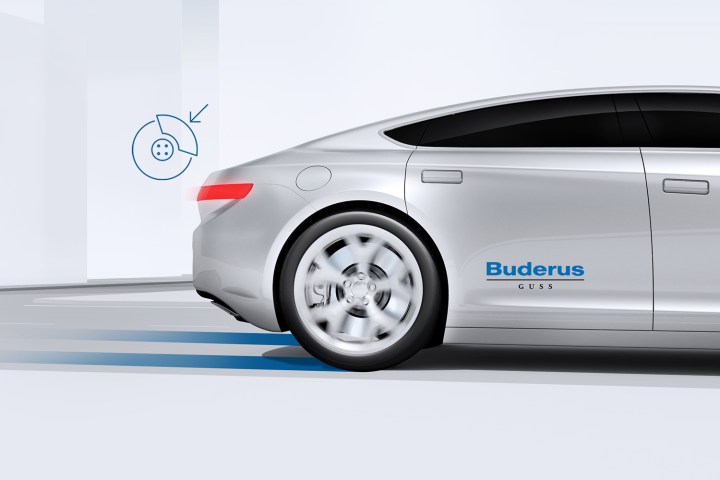
Bosch subsidiary Buderus Guss designed the iDisc. It was engineered to generate up to 90 percent less dust than a conventional brake disc, which helps make the air cleaner. Its effect is all the more noticeable in big cities because cars in crowded urban areas spend almost as much time braking as they do accelerating. It also reduces water pollution in cities like Seattle, where stormwater ultimately drains into nature.
Bosch says the iDisc starts life as a standard brake disc made with cast iron. It’s then treated and coated with a shiny chemical compound called tungsten carbide, a material that’s used to make drill bits and armor-piercing ammunition, among other products. It sounds simple when you read about it, but it’s a solution that took years of testing to develop.
“The iDisc has everything it takes to replace the conventional cast iron brake disc and become the new standard in the brake disc market. Given the continued particulate pollution debate in many countries and large cities around the world, there is nothing standing in the way of its breakthrough,” said Gerhard Pfeifer, the managing director of Buderus Guss.
Braking performance is comparable to conventional cast iron discs, according to Bosch, but the iDisc never rusts and lasts significantly longer. There’s also an aesthetic benefit to coating a brake disc with tungsten carbide — rims and hubcaps stay cleaner for longer because they are subjected to less dust.
Bosch will begin iDisc production before the end of the month. The first production car equipped with the technology is the brand-new 2019 Porsche Cayenne. The iDisc remains roughly three times more expensive than a conventional brake disc, but the technology will trickle down to less expensive models as it becomes more affordable. It’s not the most expensive way to bring a few thousand pounds on wheel to a stop — the carbon ceramic brakes available in many luxury and sports cars are three times more expensive than the iDisc.



